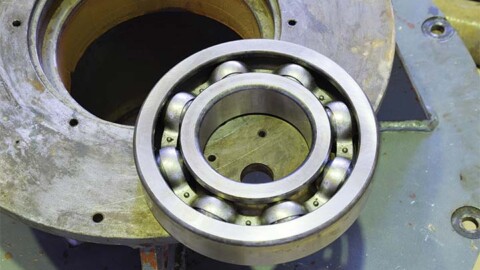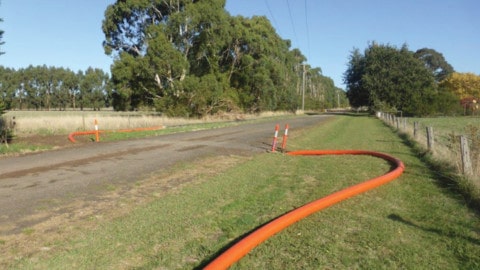There are two types of flow control used in pumping applications: real-time flow control and time-averaged flow control.
Real-time variable flow control applications
With this type of application, the flow or pressure constantly adjusts in response to changes in the system.
Real-time variable flow control can be achieved using a flow control valve (throttling) or by using a variable speed drive (VSD). VSDs are considered superior because flow control valves are inefficient.
Static head (HS) is the height which the liquid is to be pumped.
For real-time variable flow systems at low static heads, a VSD typically offers a more efficient method than throttling. But at high static heads, the savings from a VSD are reduced.
Time-averaged flow control applications
Many applications need an average control of the flow, over a long period of time. This is the case when pumping from a holding tank or to a reservoir.
In the case of wastewater pumping, the pump starts to empty the tank when it is nearly full. The pump switches off when the tank is empty and repeats the cycle when the tank refills.
Cyclic control is ideal for applications requiring time-averaged flow control because it offers energy savings and reduces installation costs.
Cyclic control switches the motor and pump on and off according to the average demands of the system.
Cyclic control uses a fixed-speed controller, such as a soft starter or direct on line (DOL) starter.
When the pump is running, it will operate close to its best efficiency point (BEP). When it is not running, the system neither consumes nor wastes any energy.
System design
Pump systems are typically designed to ensure a given operational flow (i.e. a guaranteed target maximum operational flow or Qop). The ‘ideal’ pump is one that can operate at its BEP, at the exact operational flow.
However, the pump that will actually be selected for the system will usually have a slightly greater flow than the ‘ideal’ pump.
For low static head applications, cyclic control could be replaced by real-time flow control. In this configuration, real-time flow control could offer a small improvement in efficiency (five per cent).
To achieve any efficiency gains, the flow rate would need to be continually adjusted to the real-time requirements of the application.
However, at high and low flow rates, this method of control is less efficient than cyclic control.
Low flow rates achieved through variable speed control can also create problems with clogging and cavitation.

Good practice – design pump systems for cyclic control
To minimise energy consumption, it is important to design the system carefully and select the appropriate method of control.
Except for very low static head applications, it is usually best to design pumping systems for cyclic control. Using soft starters or DOL starters, cyclic control will offer better energy efficiency.
Bad practice – cyclic control using a VSD
A VSD can be used for cyclic control by switching the motor to either full speed or off. This is not ideal because VSDs have significantly higher losses than fixed-speed controllers and the installation and running costs of VSDs are much higher than for fixed-speed controllers.
VSDs also introduce harmonics to the system, further reducing the overall efficiency, and can also affect the electrical network.
Only fixed-speed controllers such as soft starters or DOL starters should be used for cyclic control.
This partner content is brought to you by IPD Industrial Products. For more information, visit www.ipd.com.au.



















